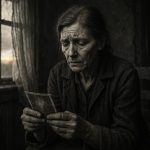
What Caused the Housing Bubble of 2008? A Perfect Storm of Greed, Delusion, and Systemic Failure
March 6, 2025
The 2008 Housing Bubble wasn’t just a financial crisis—it was an indictment of a system intoxicated by greed, blind speculation, and reckless risk-taking. Wall Street, politicians, regulators, and consumers alike bought into the grand illusion that home prices could only go up. That delusion shattered spectacularly, dragging the world economy into its deepest recession since the Great Depression.
But this wasn’t some random accident. It was a slow-motion train wreck, decades in the making. The system was rigged with ticking time bombs—cheap credit, toxic financial products, and a regulatory environment that prioritized short-term profits over long-term stability. Millions lost their homes, savings, and faith in the financial system when it all unravelled. Yet, the same cycle of excess, collapse, and bailout keeps repeating.
The Delusion That Fueled the Fire
The housing market didn’t just “boom.” It went parabolic. The average home price in the U.S. nearly doubled between 1998 and 2006, fueled by easy money and speculative mania. Between 2000 and 2005, homeownership rates in the U.S. jumped from 67% to nearly 70%—a seemingly small increase, but one that required millions of unqualified buyers to flood into the market.
And who made that possible? Banks and mortgage lenders handed out loans like candy at a Halloween party. Subprime mortgages—loans given to borrowers with poor credit—ballooned from $160 billion in 2001 to $600 billion by 2006. These weren’t your traditional 30-year fixed-rate mortgages. They were loaded with financial explosives: adjustable rates, zero-down options, and interest-only payments—designed not for stability but for maximum short-term gains.
John Kenneth Galbraith once said, “The enemy of the conventional wisdom is not ideas but the march of events.” And the event that shattered the fantasy? Interest rates began rising. Suddenly, those adjustable-rate mortgages reset, sending payments soaring. Defaults surged. And that’s when the house of cards collapsed.
The Role of Wall Street: Turning Junk Into Gold (Until It Was Just Junk)
The madness didn’t stop at reckless lending. Wall Street turned these toxic mortgages into multi-trillion-dollar Frankenstein creations called mortgage-backed securities (MBS) and collateralized debt obligations (CDOs). These were sold to pension funds, hedge funds, and even foreign governments under the false promise that they were “safe” investments.
But they weren’t safe. Not even close. The rating agencies—Moody’s, S&P, and Fitch—slapped AAA ratings on what were essentially ticking time bombs. This wasn’t an oversight; it was willful negligence. They were being paid by the same banks that issued these securities, a glaring conflict of interest.
Then came the credit default swaps (CDS)—insurance contracts against the collapse of these securities. Institutions like AIG sold them by the billions, never imagining they’d have to actually pay out. When the market imploded, AIG was on the hook for $180 billion in losses—forcing the U.S. government to step in with an emergency bailout.
Economist Hyman Minsky had long warned about this pattern. His Financial Instability Hypothesis explained how long periods of economic stability encourage reckless risk-taking, ultimately leading to collapse. The 2008 crisis followed this script perfectly: stability led to greed, greed led to excess, and excess led to destruction.
Deregulation: The Fuel That Lit the Inferno
The financial system wasn’t just reckless—it was deliberately unshackled from oversight. The Gramm-Leach-Bliley Act of 1999 repealed the Glass-Steagall Act, a key Depression-era law that separated investment banking from commercial banking. Suddenly, banks could gamble with depositor money.
And gamble they did. Lehman Brothers, Bear Stearns, and others leveraged themselves 30-to-1, meaning for every $1 they had, they were borrowing $30 to make bigger, riskier bets. When those bets went bad, they didn’t just lose their own money—they dragged the entire global economy down with them.
Alan Greenspan, former Federal Reserve Chairman and a staunch advocate of deregulation, later admitted to Congress: “I made a mistake in presuming that the self-interest of organizations, specifically banks, would protect their shareholders and equity in firms.”
Translation: “We trusted Wall Street to police itself, and they ran wild.”
Mass Psychology: The Herd Mentality That Made It All Worse
Every bubble in history has followed the same predictable psychological cycle:
- Disbelief: The market starts rising, but people assume it’s a temporary blip.
- Optimism: More buyers enter, convinced prices will keep rising.
- Euphoria: “This time is different.” Everyone’s flipping houses, taking loans, and quitting their jobs to become real estate investors.
- Complacency: Warning signs emerge, but the party keeps going.
- Panic: Prices drop. People try to sell, but there are no buyers.
- Despair: The market crashes. Banks fail. The economy grinds to a halt.
By the time panic set in, it was already too late. Banks froze lending, credit markets seized up, and the economy collapsed under the weight of its own excesses. The S&P 500 lost 57% of its value between October 2007 and March 2009. The U.S. unemployment rate soared to 10%. Over 10 million homes went into foreclosure.
Lessons We Refuse to Learn
The 2008 crisis was devastating. But what’s even more shocking? We didn’t fix the root causes.
- The Federal Reserve is still fueling bubbles with near-zero interest rates and excessive liquidity.
- Wall Street is still gambling with risky derivatives and high-frequency trading.
- Corporate debt has skyrocketed to over $11 trillion, creating new risks.
- Housing prices are surging again, fueled by record-low mortgage rates.
In short: the game hasn’t changed. The players just wear different suits.
Warren Buffett famously said, “Only when the tide goes out do you discover who’s been swimming naked.” In 2008, nearly the entire financial system was exposed. The next crash? It won’t look exactly the same—but the psychology, greed, and recklessness behind it will be painfully familiar.
Parallels with Historical Bubbles
The 2008 Housing Bubble shares striking similarities with other historical speculative manias. The Dutch Tulip Bubble of the 17th century, often considered the first recorded speculative bubble, saw the price of tulip bulbs rise to extraordinary levels before collapsing spectacularly. Like housing in the early 2000s, tulips became seen as a can’t-lose investment, with people taking on debt and selling possessions to speculate on bulbs.
The South Sea Bubble of 1720 in England offers another parallel. Here, a company with nebulous prospects in South American trade saw its stock price soar based on little more than hype and speculation. The eventual collapse ruined many investors and even changed British law regarding forming joint-stock companies.
More recently, the dot-com bubble of the late 1990s exhibited many of the same characteristics as the housing bubble. Speculative fervour, loose monetary policy, and a belief that “this time is different” contributed to both bubbles. As Mark Twain allegedly said, “History doesn’t repeat itself, but it often rhymes.”
Final Thought: Will You See the Next One Coming?
Bubbles don’t pop—they detonate. And when they do, they obliterate the unprepared, the overleveraged, and the blind followers of mass hysteria.
The 2008 Housing Bubble wasn’t a freak accident or an unforeseeable “black swan” event. It was a textbook case of greed, delusion, and systemic failure—a slow-motion train wreck that anyone paying attention should have seen coming. But most didn’t because greed clouds judgment, and easy money dulls scepticism.
History tells us that financial euphoria always ends in disaster. From Tulip Mania in the 1600s to the Dot-Com Bubble of the late ’90s, the cycle is always the same: optimism, euphoria, denial, panic, collapse. The assets change, but human psychology doesn’t.
So what’s next? Another housing bubble? A debt crisis? A tech sector meltdown? No one knows exactly what form the next crisis will take—but the signs will be there, just as they were in 2008. The question is, will you recognize them?
Those who survive—and thrive—aren’t the ones who follow the herd. They’re the ones who think independently, question narratives, and manage risk like their financial future depends on it because it does.
In the end, there are only two types of investors: those who learn from history and those who become its next victims. Which one will you be?










